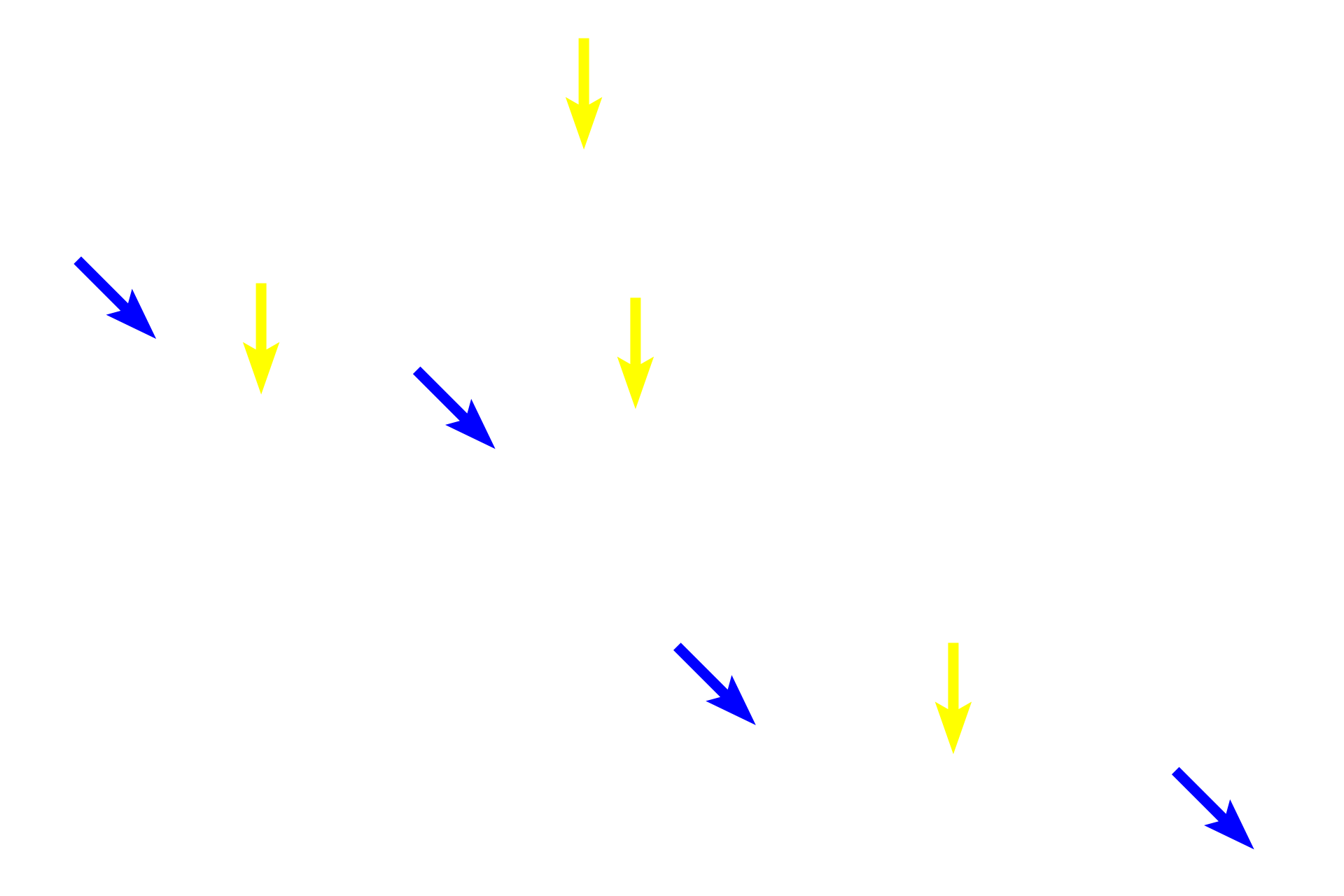
Stomach: fundus and body
Bases of gastric glands in the fundic region of the stomach demonstrate several cell types. 1000x

Fundic glands
Bases of gastric glands in the fundic region of the stomach demonstrate several cell types. 1000x

Lumens of glands
Bases of gastric glands in the fundic region of the stomach demonstrate several cell types. 1000x

Lamina propria
Bases of gastric glands in the fundic region of the stomach demonstrate several cell types. 1000x

Parietal cell >
Although more numerous closer to the lumen of the stomach, parietal cells are also seen deep in the glands. They secrete HCl, which aids in digestion, converts pepsinogen into the active pepsin, and is bacteriostatic. Parietal cells resemble fried eggs, with abundant eosinophilic cytoplasm and a centrally located nucleus.

Chief cells >
Chief cells secrete the enzyme precursor pepsinogen and, therefore, as protein-secreting exocrine cells, have basally located rough endoplasmic reticulum and apically located secretory granules. These cells are most numerous in the bases of the fundic glands, as seen here.

Enteroendocrine cells >
Enteroendocrine cells are hormone-secreting cells in the digestive system and are a subset of cells of the diffuse neuroendocrine system (DNES). They do not secrete their hormones into the lumens of the glands, but instead secrete into the surrounding connective tissue. Therefore, these cells are located at the periphery of the glands with their granules positioned away from the lumen and adjacent to the basement membrane.

Secretory granules >
Secretory granules of chief cells (yellow arrows) lie adjacent to the glandular lumens into which they are released (exocrine secretion). Conversely, the secretory granules (blue arrows) of enteroendocrine cells are located adjacent to the basement membrane of fundic glands, because their secretory product is released into the lamina propria (endocrine or paracrine secretion).